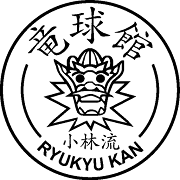
RYUKYUKAN MATSURI DOJO ESSEX
KARATE HISTORY

okinawa karate (沖縄空手)
The Ryukyu’s are a string of islands that lie between mainland Japan and China. Okinawa is the largest of the Ryukyu islands. Karate originated in Okinawa, and developed into three major branches by the late 1800’s. Each of the three branches represents a locality in Okinawa, each different in history and form, together forming the base of virtually every karate style practiced today. Naha, Okinawa’s largest city, had its own branch called Naha-te (Naha hand). Tomari, a port region near Naha became the location of Tomari-te. Shuri was the seat of the rulers of the Ryukyu kingdom, where the third branch, Shuri-te developed.
Okinawa and the Ryukyu Islands have a long history of feudalism similar to Europe. Power was consolidated into three kingdoms in the 1300’s (Sanzan Period) and then fell under one kingdom in 1429 when King Hashi and his kingdom at Shuri Castle rose to power. This was the beginning to the Sho Dynasty. Functioning as a tributary to China with its ships sailing from the port at Naha, the Sho Dynasty at Shuri Castle was at the centre of a great exchange of culture and trade all over Asia. Shuri’s Sho Dynasty held the martial power to unify the Ryukyus, and maintained an era of trade and peace for hundreds of years.
The centre of the Ryukyu martial way of life was Shuri-te, secretly maintained by the Shuri-te masters within Shuri Castle. In 1609, the Satsuma Clan of Japan took control of the Shuri Kingdom, driving Shuri-te deeper into secrecy. Shuri-te was preserved by the Shuri-te masters through private training, kata, and cultural dances. Shuri-te was first released to the public in the late 1800’s by Shuri-te master and school teacher Anko Itosu (1831-1915), who believed that his teachings could empower the youth of Japan.
Itosu Sensei passed Shuri-te to his top students, Chosin Chibana who named his branch Shorinryu (Kobayashi) Karate, and Chotoku Kyan who named his branch Shorinryu (Matsubayashi) karate. Another of Itosu Sensei’s students, Gichin Funakoshi moved to the Japanese mainland and introduced Shuri-te as Shotokan Karate.
Ryukyukan (竜球館)
Ryukyukan Karatedo Federation is committed to the preservation of the original Shuri-te/Shorinryu Karate as taught by Sensei Itosu in the 1800’s.Our president, Hanshi Koei Nohara of Okinawa, has spent his entire life studying (Kobayashi) Shorinryu as taught by Sensei Chosin Chibana, and (Matsubayshi) Shorinryu as taught by his father Kaoru Nohara, a direct student of Chotoku Kyan.
Ryukyukan (or Ryukyu Organisation) has a direct historical link to the original Shuri te, and preserves this lineage through Kata (Karate forms).
If you look closely at the Shuri Palace photo, you will see the Shi-Sa (half dragon-half lion) on the palace roof. The Shi-Sa, protector of Okinawa, can be found on the Ryukyukan patch.
SHORIN RYU (小林流)
Shorin Ryu Karate is known for quick, accurate hand and foot movement, supported by healthy, natural body movement and breathing. Shorin Ryu uses the entire body in a whip like fashion to add velocity to strikes and blocks.
Shorin Ryu Karate began as Shuri-te, or tiy (Tee), and is known as the style of the Ryukyuan court. Shuri Castle in the town of Shuri was the center of the Ryukyu Sho Dynasty and home to the Ryukyuan kings. Te means hand/skill in Japanese (tiy means hand in the ancient Ryukyuan language Hogen). Shuri-te was the martial art that was developed by the warriors and royal families of Shuri Castle.
The Ryukyuan Sho Dynasty was a tributary to China for hundreds of years. The Ryukyu Kingdom warriors protected the Ryukyu kings at home, and accompanied Ryukyuan dignitaries traveling throughout Asia. These warriors had the opportunity to train with the best martial artists of their time, and refined Shuri-te to a high degree over hundreds of years.
Due to a lack of written history, complicated by written records lost in the path of WWII, only a handful of the original Shuri-te masters can be studied today.
BUSHI MATSUMURA (松村 宗棍) (1809-1899)
One Shuri-te master whose fame has stood the test of time is Sokon Matsumura, nicknamed Bushi Matsumura for his status as a great warrior.
Matsumura Sensei served as chief Shuri-te instructor and body guard to Kings Shō Kō, Shō Iku and Shō Tai, the last three kings of the Ryukyu Kingdom.
He was married to Yonamine Chiru, a well known Tiy master in her own right.
Bushi Matsumura is the subject of a number of Okinawan folk tales, and is an historical link between ancient and modern Shuri-te.
ANKO ITOSU (糸洲 安恒) (1831-1915)
Anko Itosu, student of Matsumura, served as a secretary to King Sho Tai, the last king of the Ryukyu Kingdom. Japan was expanding its military power under the Meiji Restoration, and ended the authority of the Ryukyu Kingdom in 1879. The Ryukyuan culture was fighting for its existence and respect in the face of the growing Japanese influence over the region.
Itosu Sensei believed that his Shuri-tiy could be a valuable asset to the Japanese government. He promoted Shuri-tiy training as a way to develop a nation of strong, healthy children and teens to support Japan’s goal of military might.
Itosu began teaching Shuri-tiy in the prefectural school system, which was under the direction of mainland Japan. Itosu developed the Pinan katas, using simplified patterns best suited to training rows of students.
He also presented the ancient Naihanchi Katas in three parts. In 1921, the Crown Prince and future Emperor of Japan Hirohito verified Japan’s interest in Okinawan tiy by visiting Okinawa and viewing a demonstration of Itosu’s students.
A number of Itosu’s students migrated to mainland Japan during this time period. Notable teachers are Gichin Funakoshi (founder of Shotokan Karate), Kenwa Mabuni and Shinpan Gusukuma(founders of Shito ryu Karate), and Choki Motubu (founder of Motobu-ryu).
Two of Itosu’s top students remained in Okinawa to pass on Shuri-tiy as Shorinryu Karate. They were Chotoku Kyan and Chosin Chibana.
CHOSIN CHIBANA (知花 朝信) (1885 – 1969)
Chibana Sensei continued the Itosu Shuri-tiy tradition, naming his style Shorinryu Karate. He was the first to use name Ryu (style) for Shuri-tiy.
Chibana chose the Chinese kanji characters 小林流 also pronounced Shorinryu, which translates as “small forest style”.
The letters can also be pronounced Ko bayashi ryu, but this pronunciation is not used by karate teachers in Okinawa; Shorinryu is the preferred pronunciation.
Chibana Sensei has been called the “Last Warrior of Shuri”.
CHOTOKU KYAN (喜屋武 朝徳) (1870-1945)
Kyan Sensei continued the Shuri-tiy tradition, naming his style Shorinryu Karate just as his friend Chibana did, but chose the Chinese kanji characters 少林流. The letters are pronounced Sho (little) ryn (forest) ryu (style).
The letters can also be pronounced Shobayashi ryu, but this pronunciation is not used by karate teachers in Okinawa. In 1947, a student of Kyan, Shoshin Nagamine, founded another branch of Shorinryu spelled with the kanji letters 松林流. The first kanji is matsu, or pine. This spelling of Shorinryu means pine forest style.
Kyan Sensei was a colorful character and skilled karate master. It is said that Kyan Sensei died from starvation after the Battle of Okinawa during World War II, refusing food to allow children to eat in his place.

CLASS TIMES
monday evening CROWN Center
17:30-18:00
Shisa: (4-6 Years)
18:00-19:00
Juniors (Beginner)
(7-12 Years old)
19:00-20:00
Juniors (Intermediate)
(7-12 Years old)
20:00-21:30
Seniors
(13 years and above)
tUESday evening CROWN Center
7:30-18:30
Juniors (Beginner)
(7-12 Years old)
thursday evening eversley leisure center
18:30-19:30
Juniors (All grades) (7-12 Years old)
19:30-21:00
Seniors (13 years and above)
saturday morning CROWN center
09:30-10:00
Shisa (4-6 Years)
10:00-11:00
Juniors (All Grades) (7-12 Years old)
11:00-12:30
Seniors (13 years and above)
